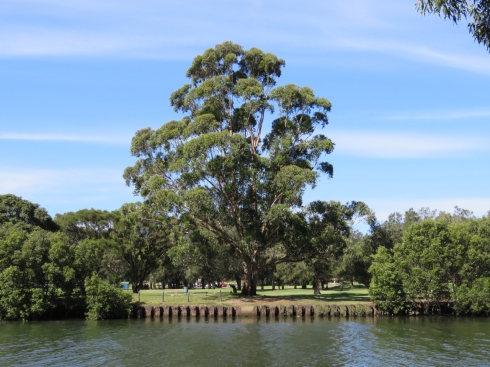This is important community consultation & something we should all participate in even if we are not a golfer. As our area gets more developed, places like this & the Golf Club’s activities are going to become even more important for the community.
The Inner West Council is developing a new Plan of Management & landscape Master Plans for the Marrickville Golf Course & the Dibble Avenue Waterhole, which will decide the future use & facilities over the next 10-years. It must be easier for Council to do things over a ten-year period, but for me, I worry about this length of time because our community & area is changing so rapidly.
Marrickville Golf Course covers 20-hectares, most of which is owned by the Inner West Council. The Marrickville Golf Club leases the land from Council. A condition of the lease is that they provide public access to the open spaces of the golf course.
There are many in the community that avail themselves of walking or cycling through the golf course because it is one of the best natural areas in the locality, especially as it runs alongside the Cooks River. Apart from the main road in & the path to the bridge over the river, there is no concrete & this makes it a great place to walk.
This won’t last for too long though because as part of their ‘Cooks River Parklands Plan of Management & Master Plan’ that was ratified in 2016, Council wants to install a new pedestrian crossing on Illawarra Road from Steel Park to a new 3-metre wide concrete shared pathway along the river’s edge in Mahoiney Reserve after they have completed naturalization work on the river bank. The first stage will stop at the golf course, but Council would like to connect this path to the bridge over the Cooks River in Marrickville Golf Course. This is despite the 3-metre shared pathway just across on the other side of the river.
The Dibble Avenue Waterhole is heritage listed & is also a Priority Biodiversity Site. It is an important refuge for wildlife & aquatic plants.
Marrickville Golf Club uses water from the Dibble Avenue Waterhole to irrigate the golf course & has done so since the 1940s.
Council says that “the development of the plans provides opportunities to introduce best practice sustainable land & environmental management for both sites.”
“The process will look at –
- ways to improve safe public access to the golf course.
- ways to increase everyone’s enjoyment of the spaces.
- alternative water sources for the golf course.
- acceptable limits on water extraction[from Dibble Avenue Waterhole] into the future.”
Council is holding onsite opportunities for the community to learn more & give Council feedback at two locations.
- Marrickville Golf Club Carpark on Saturday 2ndJune 2018 from 1pm-3pm.
- Mahoney Reserve beside the Amenities Block on Saturday, 16thJune 2018 from 1pm-3pm.
If you don’t want to attend either of these sessions, you can still participate by completing a survey on Your Say Inner West by Monday 25thJune 2018. See – https://bit.ly/2LtnPNQ
Lastly, there is no mention in the survey of Council’s plans to halve the Marrickville Golf Course from 18 holes to 9 holes to make room for more sporting fields. See – https://bit.ly/2GRxf28


































Recent Comments